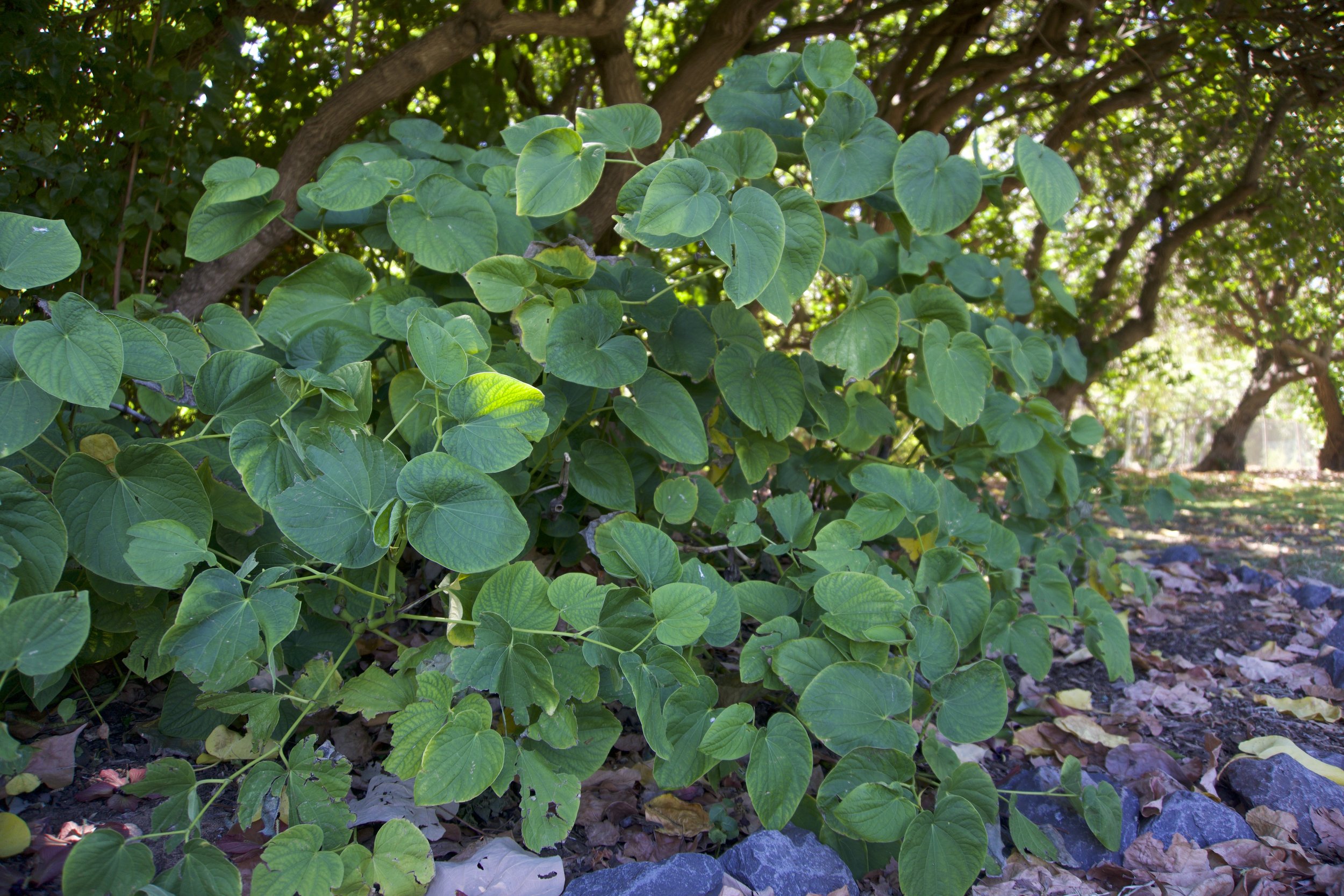Expanding Our Natural Medicines Research - Exploring the Potential Benefits of Kratom and Kava
NAP is about investigating all natural medicines with real world impact. Pharmacognosy is the study of medicinal drugs derived from plants and other natural sources, focusing on their biochemical properties and therapeutic potential. This blog explores the traditional uses and biochemistry of Kratom and Kava, highlighting their roles in herbal medicine and the need for scientific research to better understand their effects.
Kava (
Piper methysticum) plant in Hawaii at the Maui Nui Botanical Gardens.
In the world of herbal remedies, few plants have garnered as much attention as Kratom (Mitragyna speciosa) and Kava (Piper methysticum). Originating from Southeast Asia and the South Pacific, respectively, these botanicals have been utilized for centuries for their psychoactive and therapeutic properties. In this blog, we will delve into the traditional uses of Kratom and Kava, explore their biochemistry, and discuss the importance of ongoing research in understanding their effects and potential benefits.
Traditional Use
Kratom has a rich history rooted in Southeast Asian cultures. Traditionally, the leaves of the Kratom tree have been chewed or brewed into tea by local workers to enhance stamina, alleviate fatigue, and improve mood during long hours of work. In countries like Thailand and Malaysia, Kratom is often associated with social gatherings and rituals, providing both medicinal benefits and a means to bond with others. The leaves contain a variety of alkaloids, primarily mitragynine and 7-hydroxymitragynine, which are believed to contribute to its stimulating and analgesic effects.
On the other hand, Kava has been a staple in the ceremonial practices of the Pacific Islands for centuries. The preparation of Kava involves grinding the roots into a fine powder, which is then mixed with water to create a drink that has calming and relaxing properties. It plays a significant role in social interactions and is often consumed during important gatherings, such as weddings and community events served in large bowls. Kava is celebrated for its ability to reduce anxiety and promote relaxation without impairing cognitive function, thanks to its primary active compounds called kavalactones.
Biochemistry of Active Molecules
Understanding the chemistry of Kratom and Kava helps to shed light on how these plants exert their medicinal and spiritual effects.
Kratom's primary active compounds, mitragynine and 7-hydroxymitragynine, interact with the body's opioid receptors, which are part of the central nervous system. While these interactions can lead to pain relief and mood enhancement, they also carry the risk of dependence and withdrawal. Mitragynine, in particular, has been shown to possess stimulant properties at lower doses, while higher doses tend to produce sedative effects. This dual nature makes Kratom a complex herbal remedy, warranting further research to better understand its safety profile and therapeutic potential.
Kava’s primary active compounds are called the kavalactones, which influence the neurotransmitter gamma-aminobutyric acid (GABA). By enhancing GABAergic activity, Kava promotes relaxation and reduces anxiety without the intoxicating effects associated with alcohol or other sedatives. This makes Kava a popular alternative for individuals seeking to unwind or socialize without losing control. While excessive consumption can lead to side effects, including liver toxicity, there is a huge need for responsible use and research to establish safe consumption guidelines that are relevant for its therapeutic efficacy.
The Importance of Research
Despite the longstanding traditional use of Kratom and Kava, scientific research on these botanicals remains limited. Much of what we know comes from anecdotal evidence and traditional practices, underscoring the necessity for comprehensive studies to evaluate their efficacy, safety, and mechanisms of action. However, as these plant-derived products get more popular and continue to reach new audiences, it is important to study the effective dose and response with a diverse group of individuals.
Research can help clarify the potential benefits and risks associated with these plants, paving the way for informed decisions regarding their use. As interest in alternative therapies grows, it is crucial to investigate how these herbs can fit into modern healthcare practices.
Are You Interested in Participating?
At NAP, we are committed to advancing our understanding of medicinal plants like Kratom and Kava. We invite you to participate in a research study to contribute to the growing body of knowledge surrounding these remarkable plants. Your involvement can help explore their potential benefits, identify safe usage practices, and ultimately empower individuals to make informed choices about their health and wellness.
If you are interested in being part of this important research, please follow this link to see if you are eligible to participate in our collaborators’ study; https://btstudi.es/q/vivazen1/. Together, we can uncover the science behind Kratom and Kava and ensure that these traditional remedies are understood and utilized safely in our modern world.

